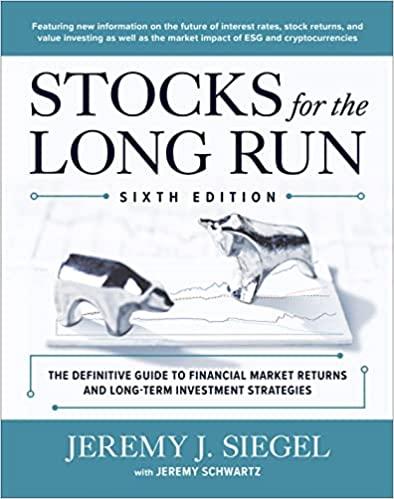Answered step by step
Verified Expert Solution
Question
1 Approved Answer
Retirement planning Personal Finance Problem Hal Thomas, a 35-year-old college graduate, wishes to retire at age 60. To supplement other sources of retirement income, he

Retirement planning Personal Finance Problem Hal Thomas, a 35-year-old college graduate, wishes to retire at age 60. To supplement other sources of retirement income, he can deposit $2.300 each year into a tax-deferred individual retirement arrangement (IRA). The IRA will earn a return of 12% over the next 25 years. a. If Hal makes end-of-year $2,300 deposits into the IRA how much will he have accumulated in 25 years when he turns 60? b. If Hal decides to wait until age 45 to begin making end-of-year $2,300 deposits into the IRA, how much will he have accumulated when he retires 15 years later? c. Using your findings in parts a and b, discuss the impact of delaying deposits into the IRA for 10 years (age 35 to age 45) on the amount accumulated by the end of Hal's 60th year, d. Rework parts a, b, and c assuming that Hal makes all deposits at the beginning, rather than the end of each year. Discuss the effect of beginning-of-year deposits on the future value accumulated by the end of Hal's 60th year. a. IT Hal makes annual end-of-year 52,300 deposits into the IRA, the amount he will have accumulated by the end of his 60th year is (Round to the nearest cont.) b. If Hal decides to wait until age 45 to begin making annual end-of-year $2,300 deposits into the IRA, the amount he will have accumulated by the end of his both year is (Round to the nearest cent.) c. Using your findings in parts a and b, which of the following options better describes the impact of delaying making deposits into the IRA for 10 years (age 35 to age 45) on the amount accumulated by the end of Hal's 60th year? (Select the best answer below.) By delaying the deposits by 10 years, Hal is incurring a significant opportunity cost. This cost is due to both the lost deposits of $23,000 ($2,300 x 10 yrs.) and the lost compounding of interest on all of the money for 10 years. O By delaying the deposits by 10 years, Hal earns a large capital gain. This gain is due to both the saved deposits of $23.000 ($2,300 x 10 yrs.) and the gained compounding of interest on all of the money not deposited for 10 years (Round to the nearest cent.) d. If Hal makes annual beginning-of-year $2,300 deposits into the IRA, the amount he will have accumulated by the end of his 60th year is (Round to the nearest cent.) If Hal decides to wait until age 45 to begin making annual beginning-of-year $2,300 deposits into the IRA the amount he will have accumulated by the end of his 60th year is 3 annuity is much larger than the incremental Both deposits compounding on the due to the extra year of compounding from the beginning of year deposits instead of the end-of-year deposits. The incremental change in the deposit due to the larger sum on which the last year of compounding occurs. (Select from the drop-down menus.)
Step by Step Solution
There are 3 Steps involved in it
Step: 1

Get Instant Access to Expert-Tailored Solutions
See step-by-step solutions with expert insights and AI powered tools for academic success
Step: 2

Step: 3

Ace Your Homework with AI
Get the answers you need in no time with our AI-driven, step-by-step assistance
Get Started


